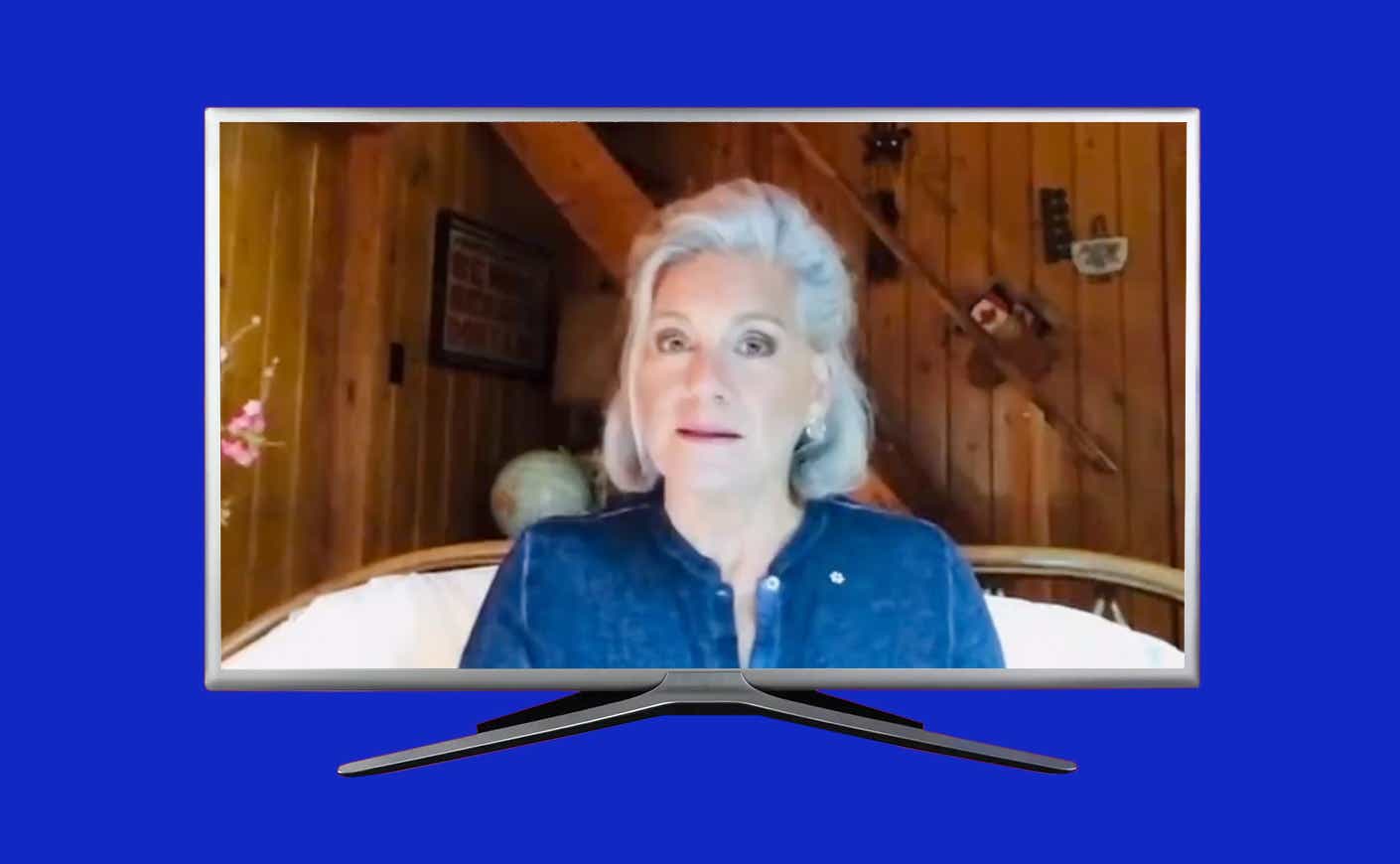The award-winning journalist’s early termination is raising eyebrows.
Although most women report feeling more confident as they reach middle age, the world does not tend to be a friendly place for aging women. From celebrities feeling pressure to age “gracefully” to everyday women reporting feeling “invisible”, what should be an exciting new life chapter can be anxiety-inducing. Even more worrisome, multiple studies prove gendered ageism is a massive problem for women in the workplace, one that can cause stress, prevent opportunities, and even lead to early dismissal from professional positions. On the bright side, more people are speaking out about how harmful (and bogus!) ageism is, which might be why the recent ousting of Lisa LaFlamme, a renowned Canadian news anchor who decided to go gray, has sparked such an outcry.
Lisa LaFlamme, 58, is an award-winning news anchor with a 35-year career in journalism. At the time of her ousting, she was likely one of the highest paid employees at CTV, the television network where she reported the news, according to The New York Times — and when she announced her departure earlier this month, it was clear she was shocked by the turn of events.
LaFlamme, who’d made headlines in 2020 for her decision to stop dyeing her hair, still had two years left in her contract with CTV. It’s worth noting that other anchors on the same network — both white men, with some pretty gray hair, themselves — had been able to report on-air well into their sixties.
“I guess this is my sign-off from CTV,” LaFlamme said in a video shared to Twitter. She made it clear the decision had been made by Bell Media, the company that owns CTV, and even went on to say she felt “blindsided” by the news. The news immediately sent shockwaves through Canadian media.
Below, we’re breaking down the timeline of LaFlamme’s hair transition and its reception, and how some influential figures (including one you might recognize) have responded.
LaFlamme decided to let her hair go gray in 2020 & called the decision ‘so liberating’
In 2020, LaFlamme first went viral for her gray hair — for a good reason. During an on-air network special, LaFlamme explained that she hadn’t been able to visit her hair stylist due to the pandemic, and had been going through the trouble of spraying her roots every single day until she decided to stop.
“I finally said, ‘why bother? I’m going gray,'” she explained. “Honestly, if I had known the lockdown could be so liberating on that front I would have done it a lot sooner.”
LaFlamme’s decision led to widespread public support — but according to an investigation by The Globe and Mail, her gray hair didn’t have the same approval internally as it did externally. A senior CTV official told The Globe that Michael Melling, the head of CTV News, asked several questions about LaFlamme’s decision to go gray, even going so far as to inquire who had approved the decision.
It was Melling who told LaFlamme, two years later, that her contract was terminated.
It’s worth noting that Melling also reportedly clashed with LaFlamme over cost-related issues, too. For example, The Globe report uncovered a situation in which Melling allegedly wanted to pull the plug on in-person coverage of the Queen’s Platinum Jubilee, citing cost issues, and LaFlamme was one of the employees who argued in favor of in-person coverage.
Was LaFlamme really fired because of her hair color?
Eventually the CEO of Bell Media, Mirko Bibic, made a statement on LinkedIn that disputed the controversy around LaFlamme’s firing. “The narrative has been that Lisa’s age, gender or gray hair played into the decision,” he wrote. “I am satisfied that this is not the case and wanted to make sure you heard it from me.”
Bibic went on to cite changing viewer behaviors and declining ratings as the reason for a number of layoffs that have taken place under Bell Media — but it’s clear that many people aren’t buying it.
Sylvia Fuller, a sociologist who studies inequality in the labor market, told the New York Times, “The media landscape has obviously been pretty turbulent in previous years,” adding, “We’ve seen quite a lot of firing and replacing of anchors and anchor teams. But nobody of [LaFlamme’s] stature, and nobody of that stature in a way that the departure has not been highly managed.”
If LaFlamme’s locks did not play into her dismissal, Bell Media is mum on what did.
A surge of support: why many — including Katie — are so angry about this moment
In the wake of LaFlamme’s sudden firing, a wide range of suporters have come out of the woodwork in her defense. For example, a collective of over 70 Canadian journalists, activists, politicians and artists have penned an open letter to Bell Media condemning their decision to fire LaFlamme.
The gray hair controversy has become so massive that it has bled over into American media, too. In fact, our very own Katie was so upset by the situation that she weighed in on the controversy on Instagram. “The way this was handled was really boneheaded,” Katie wrote. “We need to see women aging in every arena.”
A few corporations have even jumped into the fray on behalf of LaFlamme. Wendy’s Canada Twitter account recently changed its infamous icon to a woman with gray hair, and Dove has launched a #KeeptheGray campaign to encourage women to share their own gray hair pics, in an effort to normalize what is literally the most normal and inevitable process in the world: growing older.
If you want to stand behind a woman’s right to age naturally and gracefully in any workplace, you could donate to Catalyst, a Canadian nonprofit organization dedicated to helping build inclusive workplaces for all women, or join in with Dove’s initiative and snap a pic of your locks.









